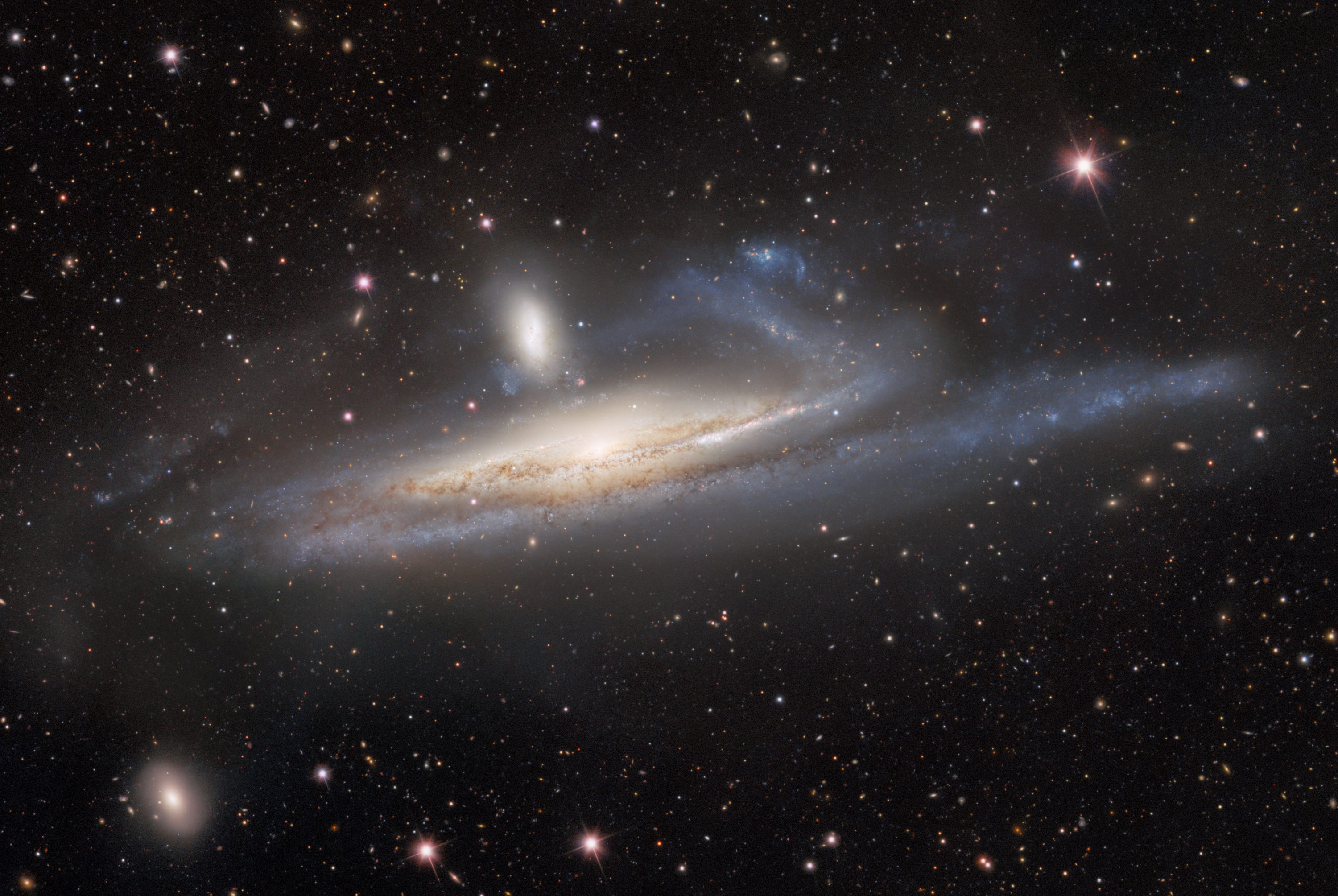NOIRLab: Dark Energy Camera Captures Galaxies in Lopsided Tug of War, a Prelude to Merger

Galaxies grow and evolve over billions of years by absorbing nearby companions and merging with other galaxies. The early stages of this galactic growth process are showcased in a new image taken with the US Department of Energy’s (DOE) Dark Energy Camera (DECam) mounted on the National Science Foundation’s (NSF) Víctor M. Blanco 4-meter Telescope at Cerro Tololo Inter-American Observatory (CTIO), a Program of NSF’s NOIRLab.
The massive barred spiral galaxy NGC 1532, also known as Haley’s Coronet, is located about 55 million light-years away in the direction of the southern constellation Eridanus (the river). Its sweeping spiral arms are seen edge-on from Earth, with the nearer arm dipping downward and the receding arm lurching upward as it tugs upon its smaller, dwarf companion galaxy NGC 1531. These gravitationally bound galaxies will eventually become one, as NGC 1532 completely consumes its smaller companion.
Despite its small stature, however, the dwarf galaxy has also been exerting a noticeable gravitational influence on its larger companion, distorting one of its spiral arms, which can be seen rising above the galactic plane. Additionally, plumes of gas and dust can be seen between the two galaxies, like a bridge of stellar matter held in place by the competing tidal forces. This interaction has also triggered bursts of star formation within both galaxies.
